| Lesson 7 | Modeling associations, continued |
| Objective | Define the notation for three variations on associations |
1) Reflexive association, 2) Association Class, 3) Qualified Association
Define Notation for Three Variations on Associations
This lesson will define the notation for three variations on associations:
- reflexive,
- qualified, and
- association classes.
1) Reflexive association
The reflexive association is used when objects in the same class can be associated. The entire association notation remains the same, except that the association line is drawn to and from the same class.
Both examples below are equivalent expressions; one uses roles, whereas the other uses an association name:
Both examples below are equivalent expressions; one uses roles, whereas the other uses an association name:
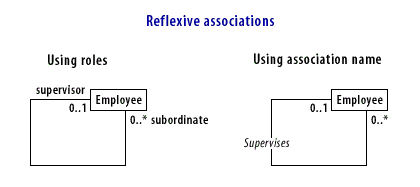
2) Association class
Association classes are used to identify information about an association. The information is placed in a class attached to the association that it describes by a dashed line.
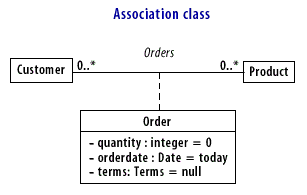
Be on the lookout for association classes when you see a multiplicity of more than one used on both ends of the association.
3) Qualified Association
Qualified associations provide the same functionality as indexes. The notation has a bit of a twist, so pay attention.
To indicate that a customer can look up an order using the order's
ordernumber attribute, the ordernumber attribute name is placed in a rectangular box on the Customer end of the association.
All the other association notation remains intact but is pushed out to the edge of the rectangle. Also, because the qualifier is an attribute, it may include a data type.
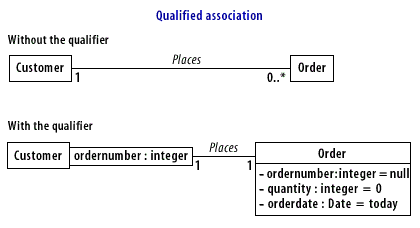
Use qualifiers to reduce the multiplicity in the same way you would use indexes in a database. Note in the example how the multiplicity for Order changed from
0..* to 1 because the qualifier provided a unique key for Order.
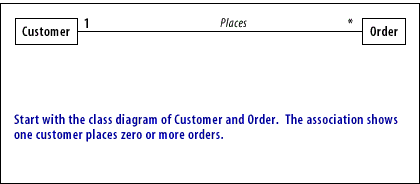
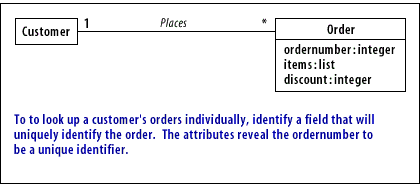
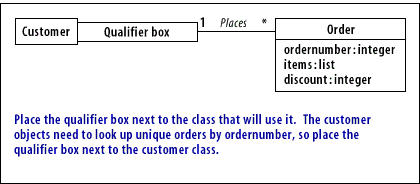
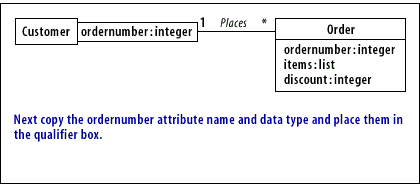
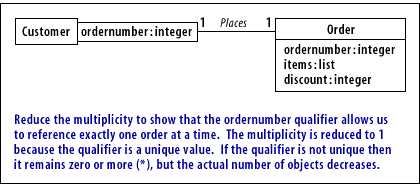
- Start with the class diagram of Customer and Order. The association shows one customer places zero or more orders.
- To look up a customer's orders individually, identify a field that will uniquely identify the order. The attributes reveal the ordernumber to be a unique identifier.
- Place the qualifier box next to the class that will use it. The customer objects need to look up unique orders by ordernumber, so place the qualifier box next to the customer class.
- Next copy the ordernumber attribute name and data type and place them in the qualifier box
- Reduce the multiplicity to show that the order number qualifier allows use to reference exactly on order at a time.
UML Bible
Customer Order Modeling Associations
In the next lesson, you will learn about aggregation and composition associations.
In the next lesson, you will learn about aggregation and composition associations.
UML Class Elements
Click the link below to read about the elements of a class diagram.
UML Class Elements
UML Class Elements
Diagrammatic Class Diagram - Example
Click the link below to read about and view identifying elements of a class diagram.
Class Diagram - Example
Class Diagram - Example
Building Big Data Pipelines with Apache Beam